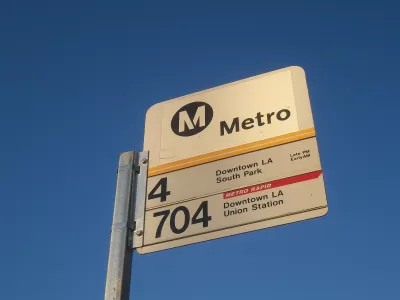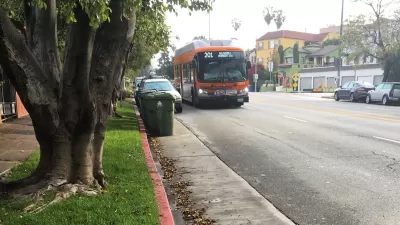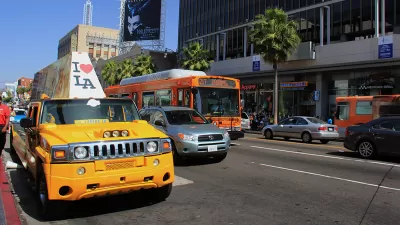Late last week, Los Angeles transit riders got a first peak at the proposed NextGen Bus Plan, a system redesign that promises to completely redefine transit access in the county.

Last Friday, the Los Angeles County Metropolitan Transportation Authority (Metro) released the first draft of its NextGen Bus Plan, first announced in 2017 with hopes of reversing rapidly plummeting ridership on the system.
"In a big step forward for Metro’s efforts to restructure its vast bus system, the agency today released a draft service plan that would greatly improve the frequency of buses across the Metro system," according to an article written by Steve Hymon for Metro's The Source.
The big ticket items of the proposed plan include the following benefits, as described by Hymon:
- Buses would arrive every five to 10 minutes for 83 percent of current riders compared to 49 percent today.
- The number of bus lines running every five to 10 minutes on weekdays would jump from 16 to 29 and from two to 14 on weekends.
- The number of Los Angeles County residents who could walk to bus lines running every five to 10 minutes would more than double from 900,000 currently to almost 2.2 million.
The model for the redesign follows the frequent grid made most famous in the United States by Houston in 2015. In addition to consolidating certain routes, the plan also proposes eliminating stops to speed up bus service, according to the article.
As noted by Hymon, the draft NextGen Bus Plan is expected to evolve after a public engagement process expected to launch in February and March (a schedule is already available).
"Later this month, Metro will also be releasing route-by-route changes and online tools that will better visualize what your bus ride would be like under the draft plan," according to Hymon.
FULL STORY: Frequent service plan released for NextGen Bus Plan

Planetizen Federal Action Tracker
A weekly monitor of how Trump’s orders and actions are impacting planners and planning in America.

Chicago’s Ghost Rails
Just beneath the surface of the modern city lie the remnants of its expansive early 20th-century streetcar system.

San Antonio and Austin are Fusing Into one Massive Megaregion
The region spanning the two central Texas cities is growing fast, posing challenges for local infrastructure and water supplies.

Since Zion's Shuttles Went Electric “The Smog is Gone”
Visitors to Zion National Park can enjoy the canyon via the nation’s first fully electric park shuttle system.

Trump Distributing DOT Safety Funds at 1/10 Rate of Biden
Funds for Safe Streets and other transportation safety and equity programs are being held up by administrative reviews and conflicts with the Trump administration’s priorities.

German Cities Subsidize Taxis for Women Amid Wave of Violence
Free or low-cost taxi rides can help women navigate cities more safely, but critics say the programs don't address the root causes of violence against women.
Urban Design for Planners 1: Software Tools
This six-course series explores essential urban design concepts using open source software and equips planners with the tools they need to participate fully in the urban design process.
Planning for Universal Design
Learn the tools for implementing Universal Design in planning regulations.
planning NEXT
Appalachian Highlands Housing Partners
Mpact (founded as Rail~Volution)
City of Camden Redevelopment Agency
City of Astoria
City of Portland
City of Laramie





























